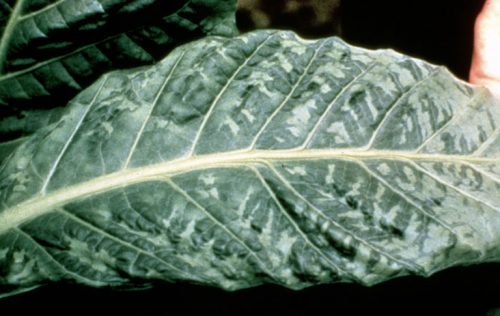Mosaic virus is an umbrella term for many harmful plant viruses that all cause a characteristic mosaic pattern on plants.
Known mosaic viruses:
Zucch
Cucum
Cucum
Tomato Brown Rugose Fruit Virus (To
Tobacco mosaic virus (ToMV)
Tomato mosaic virus (TMV)
Beet mosaic virus (BtMV)
Mosaic virus is an umbrella term for many harmful plant viruses that all cause a characteristic mosaic pattern on plants. Outward resemblance is often exclusively the only thing these viruses have in common.
The mosaic pattern consists of light and dark, sometimes green, sometimes yellow spots on the leaves. This infestation is caused by a disturbance in the structure of the mesophyll. Then leaves curl, the affected areas grow larger and deformities develop on the plant. Eventually, the plant wilts. Sometimes the fruits of infected plants acquire a bitter taste: cucumber, zucchini: Cucumber mosaic virus (CMV), Zucch
Mosaic virus is spread by cicadas, thrips, beetles and aphids. Contaminated tools, nematodes (roundworms), seeds and fungi can also spread the virus.
Tobacco Mosaic Virus (ToMV) affects plants of the nightshade family, including the tobacco plant, cucumber, tomatoes, pepper and ornamental flowers.
The leaves of plants infected with Tobacco Mosaic Virus yellow around the veins, then the characteristic mosaic spots appear. The leaves start to curl and the plant grows up unevenly.
Where to find
- Vegetable plot and ornamental garden
- Plants of the nightshade family
Control
Remove infested plants.
Prevention
Ensure healthy plant material and a clean work environment. Keep the surrounding area weed-free.
Crop rotation helps prevent mosaic virus.

